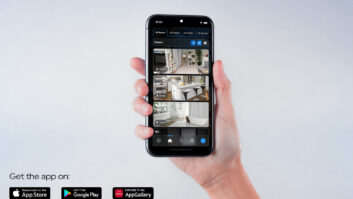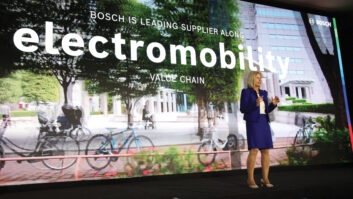CES 2014 Las Vegas – German engineering meets Silicon Valley was the theme of Monday’s keynote presentation, hosted by TV actor Kunal Nayyar, star of the hit CBS sitcom “The Big Bang Theory.”
“The word automobile actually means self moving,” Nayyar explained, before introducing Gary Shapiro, president/CEO of the Consumer Electronics Association, and Rupert Stadler, chairman of the board of management of Audi AG. The pair drove onto the stage in a chauffeured Horch, suggesting that the concept of a “piloted” vehicle once meant a hired driver.
“When you think of CES, cars are not the very consumer product that comes to mind,” said Shapiro. “But the truth is that cars have become mobile technology platforms. Auto makers are rapidly adding innovation that allows cars to be personalized and drivers to be connected. When you think of German engineering, you automatically think of cars.”
Audi has been at the forefront of automobile innovation for more than 100 years Shapiro added, and the auto maker has taken a lead with infotainment, driver assistance and notably piloted drivers. It is in that development of autonomous driving where Audi now rapidly charging ahead.
“Today we are redefining what piloted driving means for a new era,” said Audi’s Stadler. “As I see, the history of the automobile falls into four eras.”
In the first, he said, man created the machine but saw its limits, while in the second era it was in essence about “taming” that machine and making it reliable and making it work for people. It turned from a novelty to an everyday tool. This was followed by improvements in safety and efficiency, and most cars today are not all that different from the Horch that drove onto the stage, he added.
“Today we see a period of major changes,” he suggested, “and the fourth era is the one in which we move from refining the automobile to redefining mobility.”
This is how Audi is now helping close the gap between consumer electronics and the automobile, and connecting drivers with their cars and their lives. It is finally, Stadler noted, about closing the gap from science fiction to reality of our world.
This pilotless driving effort has seen Audi partner with industry leaders in electronics along with the creative power of Silicon Valley. To highlight these partnerships, Stadler was joined on stage by Ralph de la Vega, president and CEO of AT&T Mobility, and Jen-Hsun Huang, co-founder, president and CEO of Nvidia.
“Audi has always been on the cutting edge of technology,” said de la Vega, “They worked on the connected car long before most.”
De la Vega announced AT&T will power the Audi A3 family with AT&T 4G LTE. “We’re not just a network to our connected car partners,” he said. “AT&T Drive is a solution that we can take to automakers like Audi so they can innovative but still differentiate. We’ve got all the tools that an auto maker needs to create an awesome connected car experience. Most important, we’re flexible.”
“There is no one size fits all,” de la Vega added. “Drivers are different, and Audi is an innovator that looks to be different than the other guy.”
Nvidia is also known for its graphics card, but it too sees opportunities in working with the auto maker.
“If we’re in the middle of a mobile computing revolution, then the car is the most advanced mobile computer,” said Nvidia’s Huang.
However, Stadler admitted that innovation in automobiles and electronics moves at very different speeds.
“The engineers started to think about your car seven years ago,” said Stadler. “This is not a lifetime for automobile development, but it is several lifetimes for electronics.”
This is thus both a big challenge and a big opportunity, and this is why Audi remains committed to building a global ecosystem of partners that include not only Nvidia and AT&T but also chip maker Qualcomm.
“Through this partnership in 2013 Audi became the first car maker to bring integrate 4G LTE to market,” Stadler added.
To demonstrate the progress Audi unveiled a concept car that combined a traditional V8 engine with a 110 kilowat electric car, which could travel more than 90 miles on a single gallon of gasoline.
“In one body you have a muscle car and a plug in hybrid,” Stadler suggested. “This is about German engineering meets Silicon Valley.”













